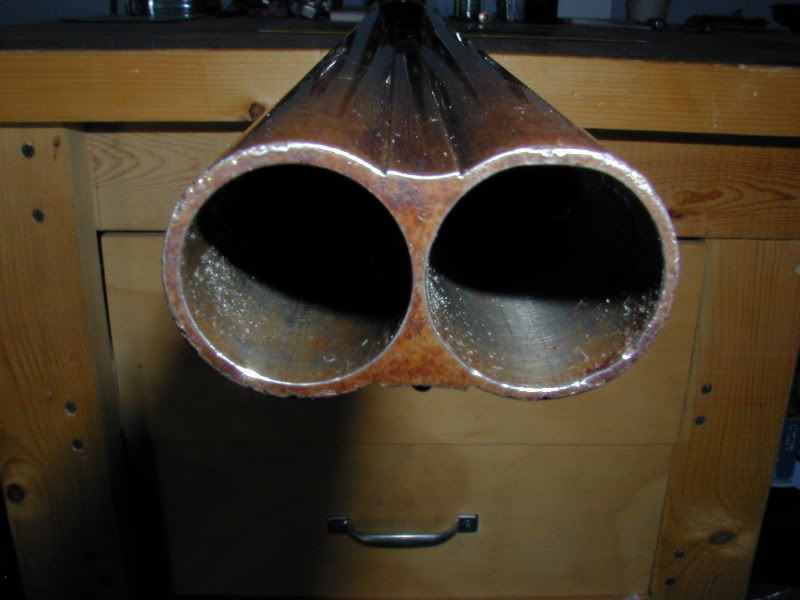|
|
|
S |
M |
T |
W |
T |
F |
S |
|
|
|
|
1
|
2
|
3
|
4
|
|
5
|
6
|
7
|
8
|
9
|
10
|
11
|
|
12
|
13
|
14
|
15
|
16
|
17
|
18
|
|
19
|
20
|
21
|
22
|
23
|
24
|
25
|
|
26
|
27
|
28
|
29
|
30
|
31
|
|
|
|
2 members (Jtplumb, 1 invisible),
675
guests, and
2
robots. |
|
Key:
Admin,
Global Mod,
Mod
|
|
|
Forums10
Topics39,504
Posts562,171
Members14,587
| |
Most Online9,918
Jul 28th, 2025
|
|
|
|
Joined: Jan 2004
Posts: 256
Sidelock
|
OP

Sidelock
Joined: Jan 2004
Posts: 256 |
Need some opinions on safe, minimum, barrel wall thickness on a light 12 gauge game gun.
The one I am looking at has minimum .025 left, and .028 right. Thanks in advance for any advice. Grant.
|
|
|
|
|
Joined: Jul 2005
Posts: 7,065 Likes: 1
Sidelock
|

Sidelock
Joined: Jul 2005
Posts: 7,065 Likes: 1 |
Depends on where that occurs. If those measurements were found 3/4" past the chamber I would pass. If it is 10" from the muzzle I wouldn't hesitate (If I liked the gun).
Best,
Mike
I am glad to be here.
|
|
|
|
|
Joined: Apr 2002
Posts: 6,812
Sidelock
|

Sidelock
Joined: Apr 2002
Posts: 6,812 |
Grant:
For 12 gauge, .090<.105" customarily considered the acceptable minimum just ahead of the chambers or cones. Despite this oft repeated caveat about the location of the "minimum", I very much doubt that any reputable dealer would even consider selling a gun with the thinnest wall section located just ahead of the chamber. There is a difference between the thinnest area of the barrels and acceptable "mimimum" for a given area. Someone lengthens chambers and runs out into the quick taper of the exterior striking in the first four inches of the barrel and the location of measurements greater than "minimum" but less than the "minimum acceptable" FOR THE LOCATION become absolutely critical whatever the convention for measuring "minimums".
jack
|
|
|
|
|
Joined: Jul 2005
Posts: 7,065 Likes: 1
Sidelock
|

Sidelock
Joined: Jul 2005
Posts: 7,065 Likes: 1 |
My shooting student Joe Wood tells me that near the muzzle the minimum wall thickness is more about dent repairability than about containing the pressure without bulging or bursting.
Best,
Mike
I am glad to be here.
|
|
|
|
|
Joined: Apr 2002
Posts: 6,812
Sidelock
|

Sidelock
Joined: Apr 2002
Posts: 6,812 |
Actually, thiness near the muzzles makes them more susceptible to dents so in a way Joe is correct in that you might have more of them to repair on thin barrels leading to a repetitive and expensive nuisance. I hadn't heard that a dent in a thicker area is any more difficult of repair--maybe it takes more time and tappety-tap-tap.
jack
|
|
|
|
|
Joined: Jan 2002
Posts: 11,573 Likes: 165
Sidelock
|

Sidelock
Joined: Jan 2002
Posts: 11,573 Likes: 165 |
It's just that you're less likely to get a dent that shows on the inside where the walls are thicker. If you don't see it in the bore, it's basically a cosmetic issue.
|
|
|
|
|
Joined: Feb 2006
Posts: 3,854 Likes: 118
Sidelock
|

Sidelock
Joined: Feb 2006
Posts: 3,854 Likes: 118 |
This is an 1892 W.W. Greener, Facile Princeps F16, 12 ga. 2 1/2" chambers, Damascus barrels. Think these barrels are thin? Barrels are 27 1/8", imp. cyl in right, full in left. I only shoot low pressure, low velocity 7,000 psi and under. Gun weighs 6 lbs. even. 
Last edited by JDW; 02/06/11 07:00 PM.
David
|
|
|
|
|
Joined: Jul 2008
Posts: 1,008
Sidelock
|

Sidelock
Joined: Jul 2008
Posts: 1,008 |
Okay, I give up - what are the wall thicknesses on the Greener?
|
|
|
|
|
|
|